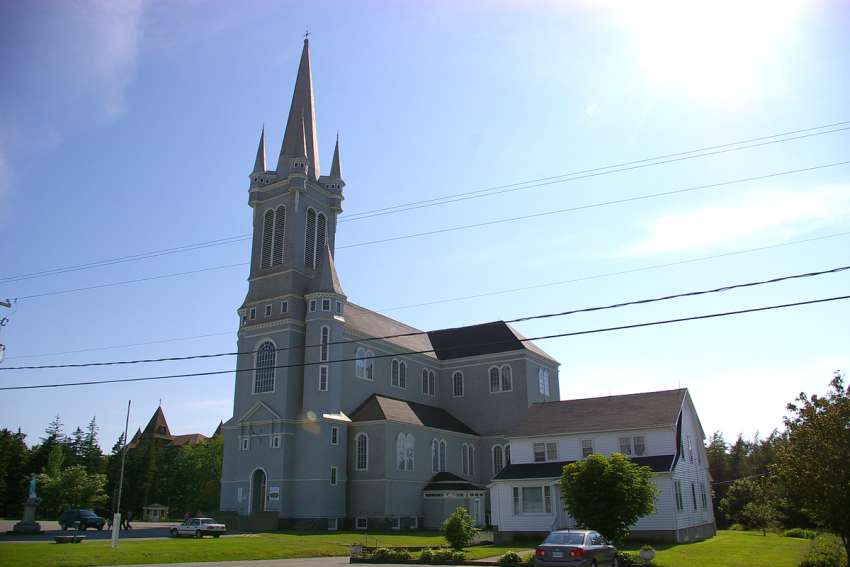The money would be earmarked for the repair and ongoing maintenance of the grand house of worship, currently facing demolition. The church is widely heralded as the largest wooden church in North America with a height of 185 ft.
This offer was exciting to the ears of Pierre Comeau, the president of the Société Édifice Sainte-Marie de La Pointe (Saint-Marie Building Preservation Society).
“Perhaps it came from Heaven,” said Comeau. “We were all overjoyed because a group of us have been working for over seven years to find the means of preserving the structure.”
Église Sainte-Marie, revered by the local Acadian community since its doors first opened in 1905, closed because of significant water damage and dwindling attendance.
But the offer comes with a major condition attached: the donor wants this money bequeathed to an active church, something the cathedral has not been since 2019. The stipulation means the regional Catholic community and the Archdiocese of Halifax-Yarmouth have some difficult and pressing deliberations ahead.
“We have a lot of details to work out and several key gates to go through before this moves ahead, like determining the total costs involved and hearing from parishioners,” said Aurea Sadi, a spokesperson for the Halifax-Yarmouth archdiocese.
There are three parishes in the area that would be affected by the reopening of Église Sainte-Marie: Eglise Sacre-Coeur in Saulnerville, Église Stella Maris in Meteghan, and St. Alphonse in Mavillette. Archbishop Brian Dunn made presentations at each parish over the April 14 and 15 weekend to present the facts about the offer and what accepting it could mean for the Catholic presence in the region.
“If they’re going to save this one building, how does that affect the other three church buildings they currently have? We have to have those really difficult discussions about what is best," said Sadi. "Just because a building is saved, which is one of the words used by other media, what are the things that go along with that? What does it mean to have an active, vibrant community celebrating Mass? How do you evangelize? How do you bring the community back to that parish?”
Sadi characterizes the cathedral as a “700-800 seater.” A group of loyal parishioners will not be enough. Currently, trying to host four parishes in the region is not viewed as the most viable option. Reopening Église Sainte-Marie would more than likely require the closure of one of the other three houses of worship.
Comeau expected it would “be difficult to sell that message” as “people are attached to the churches they have been going to all their lives,” but he said he hopes “people can see the bigger picture.”
Self-described as a guy “who is not afraid to speak out in public,” Comeau detailed the case he planned on making to each parish community.
“To the Acadian community here, the Église Sainte-Marie is more than a church to us,” he said. “It’s a monument and testimony to the ingenuity, faith and perseverance of our ancestors who built this thing over 100 years ago with not a lot of resources and many hours of volunteer labour. It is also unique because it is the largest wooden church in North America. It’s special.”
Comeau adds that there is “an economic case to be made” because the donor has pledged to take care of ongoing maintenance costs, something not being afforded to the other three parishes.
No official deadline for making a decision has been declared. If the choice is not to utilize Église Sainte-Marie as an active parish, the prospect of this historic building being demolished will loom large again.


